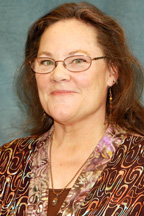 by Denise H. Stuart
by Denise H. Stuart
In many classrooms today teachers are responding to learner’s needs through differentiated instruction where they offer respectful tasks, flexible grouping and ongoing assessment and adjustment (Tomlinson and Allan, 2000). They may vary content in using texts at multiple reading levels, process through a variety of activities and product as students are encouraged to express what they learned in varied ways, often of their choice. The use of digital text with e-readers may be a powerful tool to facilitate differentiating instruction in the classroom, especially with student-centered literacy approaches such as Book Clubs and Literature Circles where groups of learners are reading and responding to the same or different texts.
Using today’s ubiquitous technologies has emerged as a way to engage and motivate readers. In a case study of two readers of diverse reading levels and linguistic backgrounds Larson (2010) describes how the features of the e-reader provided individual support as they read and responded to literature. Larson concluded that “digital readers show promise in supporting struggling readers through multiple tools and features” (p. 21). Beyond the portability, ease of access and adjustments to font, e-readers have features to support comprehension. Readers can look up the meanings of words or phonetic spellings to “sound out” unknown words using the built-in dictionary. The text-to-speech feature can be activated to listen to challenging words or passages. Readers can create digital bookmarks or use the highlighter feature in preparation for sharing passages with others. Some e-readers support students in making notes or comments that can be shared on others’ devices in their e-reader book club.
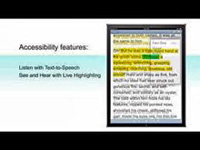
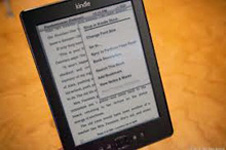
In order to assess and plan for differential use of e-reader features ReadWriteThink offers an instrument, the Digital Reader Tools and Features Anecdotal Record for teachers to review what their readers are using and make decisions about what instruction to offer for continued use of the e-book. In the featured author section of the site Lotta Larson shares her experiences with e-readers and links to a series of detailed lesson ideas using e-readers for engaged reading, vocabulary development, response activity and online discussion. A comparative chart developed on ReadWriteThink offers Suggested e-Book Resources.
Media specialist at the NIHF STEM middle school, Susan Hall implements differentiated book clubs with e-readers. Learners in “Book Club Café” receive additional support through read alouds, ongoing focused discussion, conferencing and explicit instruction as needed. Hall notes e-readers function to respect and perhaps protect learners from displaying what their peers might consider low level reading material. Learners in the “Book Bistro” read the same book independently and join book discussions of focused prompts or recommend books to be read with open-ended questions. A group of independent readers each selects a different text to read and choose their own topics to be discussed. Susan describes these as “Socratic discussions” where they ask the big questions like “what is reality?” She considers starting a graphic novel book club for all interested. Her students are developing both platform and text preferences in reading as they use a variety of features and e-readers, from apps on laptops and smart phones to popular e-reader devices. The potential for differentiating instruction is facilitated with the use of the e-reader and purposeful planning.
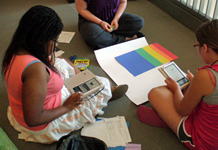
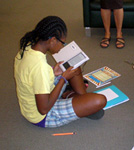
References
Larson, L.C. (2010). Digital readers: The next chapter in e-book reading and response. The Reading Teacher, 64(1),15-22.
Tomlinson, C. A. & Allan, S. D. (2000). Leadership for differentiating schools and classrooms. Association for Supervision and Curriculum Development.
Denise Stuart is from The University of Akron, Ohio.
This article is part of a series from the Technology in Literacy Education Special Interest Group (TILE-SIG).